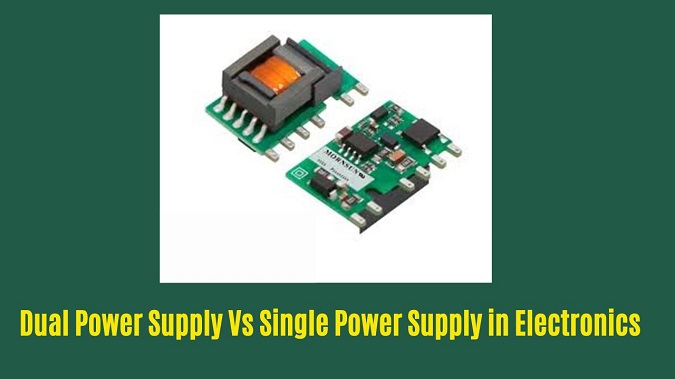


Discover the key differences between dual and single power supplies in electronics and find out which suits your needs best.
Power supplies are essential in electronics, providing the necessary voltage and current for various components. Choosing between a dual power supply and a single power supply can impact your circuit’s performance and complexity. This post will compare these two types to help you decide which is best for your needs.
A single power supply provides one voltage output, either AC or DC. It is straightforward and commonly used in many electronic projects. Single power supplies are often sufficient for simple circuits where only one voltage level is needed. They are cost-effective and easy to implement, making them a popular choice for basic applications.
In contrast, a dual power supply offers two separate voltage outputs. This setup can provide both positive and negative voltages from a single unit. Dual power supplies are ideal for circuits that require multiple voltage levels. They are particularly useful in analog circuits, operational amplifier circuits, and situations where stability and noise reduction are critical.
Single Power Supply Modules offer one voltage level, while dual power supplies provide two. This makes dual supplies more suitable for circuits requiring different voltage levels.
Single power supplies are ideal for simpler applications. Dual power supplies are better for complex circuits needing dual polarities or improved noise control.
Single power supplies are simpler and more cost-effective. Dual power supplies are more complex and often come with a higher price tag due to their additional functionality.
Dual power supplies often provide better noise reduction. They are advantageous in precision circuits where signal integrity is critical.
Evaluate the complexity of your circuit. Dual power supplies are better for designs requiring multiple voltage levels or balanced power.
Assess whether your project needs high precision or noise reduction. Dual power supplies excel in scenarios requiring these features.
Balance your project’s budget with its power supply needs. Single power supplies are a cost-effective option for simpler applications.
Choosing between a dual and single power supply depends on your specific needs. Consider factors like circuit complexity, performance requirements, and budget. Each type has its advantages and ideal use cases.
Dual power supplies offer flexibility with multiple voltage levels, better noise reduction, and enhanced performance for complex circuits.
A single power supply might work for simpler circuits but may not meet the needs of more complex designs requiring varied voltage levels.
Dual power supplies provide isolation between different voltage levels, which helps reduce noise and improve signal integrity.
Yes, dual power supplies are generally more complex and costly but offer additional benefits for advanced applications.
